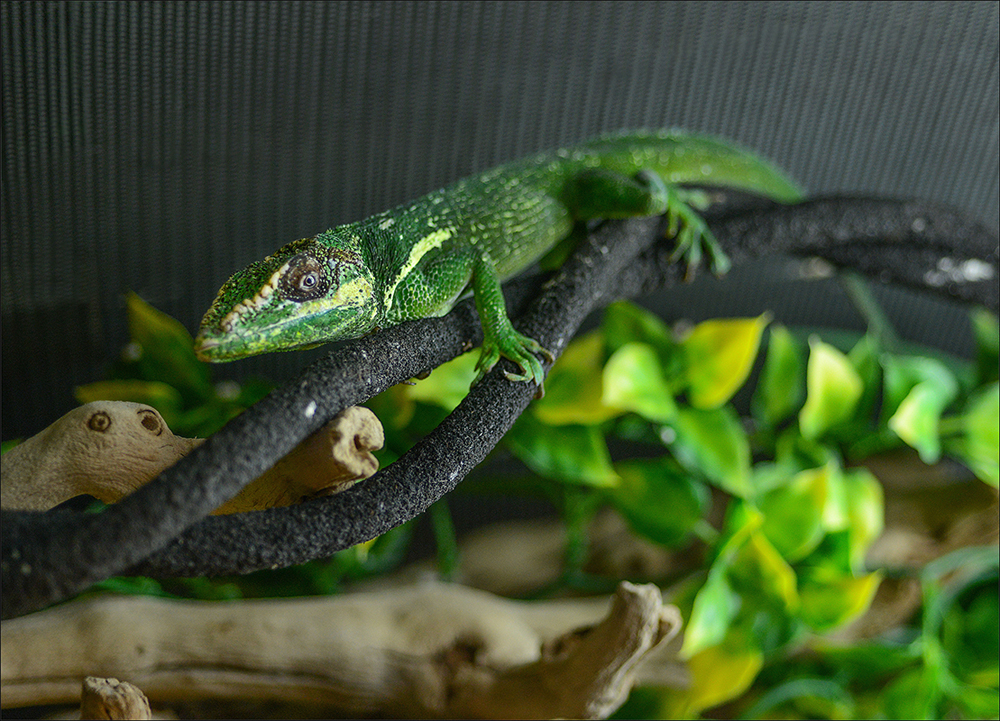Island Diversity: Cuba's Amazing Animals in Museum Spotlight

From lush wetlands to dense networks of caves, the island of Cuba is home to diverse environments that are teeming with life, hosting many unusual species found nowhere else on Earth.
And a number of these unique animals take center stage in the new exhibit "¡Cuba!" opening Nov. 21 at the American Museum of Natural History (AMNH) in New York City.
"¡Cuba!" showcases the nation's culture as well as its natural wonders. It walks visitors through bustling city streets, and then pivots into dioramas featuring Cuba's native animals: fierce crocodiles, silvery fish and colorful parakeets and water birds. [Giant Owls and Painted Snails: Incredible Creatures from Cuba (Photos)]
4,000 islands
Cuba is the Caribbean's biggest island nation, but referring to it as a single island is a bit of a misnomer — it represents a vast archipelago of more than 4,000 islands and keys. The big island's most iconic environments — forests, wetlands, caves and reefs — were reconstructed for the exhibit specifically to highlight the biodiversity they hold, co-curator Ana Luz Porzecanski, director of the Center for Biodiversity and Conservation at AMNH, told Live Science.
"Cuba harbors the largest forests in the Caribbean, the largest marine reserve in the Caribbean, some of the healthiest reefs, and also the largest wetlands in the Caribbean," Porzecanski said.
"Cuba also has a very extensive cave system. They not only have a unique biota, but they also preserve a lot of the past, and provide insights into what Cuba was like thousands of years ago," she added.
Big and small
Fossils from the region tell of a land once roamed by enormous ground sloths weighing hundreds of pounds and ruled by a massive and stubby-winged owl that stood nearly 3 feet (nearly a meter) tall and was considered the top ground predator, according to co-curator Christopher Raxworthy, curator-in-charge for the AMNH Department of Herpetology.
Sign up for the Live Science daily newsletter now
Get the world’s most fascinating discoveries delivered straight to your inbox.
In island environments, after nonswimming species arrive and are unable to leave, they adapt over time to occupy certain ecological niches, and can become highly specialized. Cuba had no large ground carnivores, such as the big cats, bears or wolves native to North America. This created an opportunity for the owl Ornimegalonyx to evolve into the largest owl that ever existed, and to become Cuba's deadliest ground predator, Raxworthy said.

Mighty Ornimegalonyx likely became extinct between 8,000 and 6,000 years ago, but another native — a giant rodent — still roams the island. Known as the hutia, it weighs up to 19 pounds (9 kilograms) and measures up to 35 inches (89 centimeters) from nose to tail tip.
Cuba supports unusually tiny animals, too, such as the bee hummingbird — the smallest bird on Earth — which is about the size of a bumblebee and weighs less than a U.S. penny.
"Miniaturization and gigantism in Cuba give us a platform to explain about evolution," Raxworthy said. "It's a great place to talk about species in island environments and about how bizarre they can get."
One of a kind
Unusual size isn't the only path that Cuba's animals followed as they evolved to survive in their isolated ecosystems. Some developed chemical weapons, such as the long-nosed mammal known as the almiquí, which produces toxic saliva that it delivers through venomous bites, and the Cuban tree frog, which emits toxic mucus. Live specimens of the Cuban tree frog and several other species of amphibians and reptiles are on display in the exhibit. [See Photos of Cute and Colorful Frogs from an AMNH Exhibit]
And it's very likely that as-yet undiscovered species in Cuba's protected areas would be just as astonishing as the species already known to science, Porzecanski said.
"When you look at the amphibians of Cuba, 95 percent of them are endemic — found only in Cuba — which tells you that almost any new frog you discover will likely be unique on a global level," she said.
Climate change and human activity pose ongoing threats to delicate ecosystems like Cuba's, but rigorous national efforts to mitigate the effects of a warming world and to designate protected areas could ensure a more hopeful future for the island's native plants and wildlife.
"Cuba takes climate change adaptation and mitigation and preparation very seriously," Porzecanski told Live Science. "They know their coasts are likely to change, they know that the frequency of hurricanes and storms may change, and they are preparing for that."
"There's a very active program to conserve different types of habitats — there are now 200 protected areas," Raxworthy added. "I'm optimistic. They're at a point where they can conserve populations, and the future looks very bright."
The "¡Cuba!" exhibit will be open from Nov. 21 through Aug. 13, 2017.
Original article on Live Science.

Mindy Weisberger is an editor at Scholastic and a former Live Science channel editor and senior writer. She has reported on general science, covering climate change, paleontology, biology and space. Mindy studied film at Columbia University; prior to Live Science she produced, wrote and directed media for the American Museum of Natural History in New York City. Her videos about dinosaurs, astrophysics, biodiversity and evolution appear in museums and science centers worldwide, earning awards such as the CINE Golden Eagle and the Communicator Award of Excellence. Her writing has also appeared in Scientific American, The Washington Post and How It Works Magazine. Her book "Rise of the Zombie Bugs: The Surprising Science of Parasitic Mind Control" will be published in spring 2025 by Johns Hopkins University Press.










